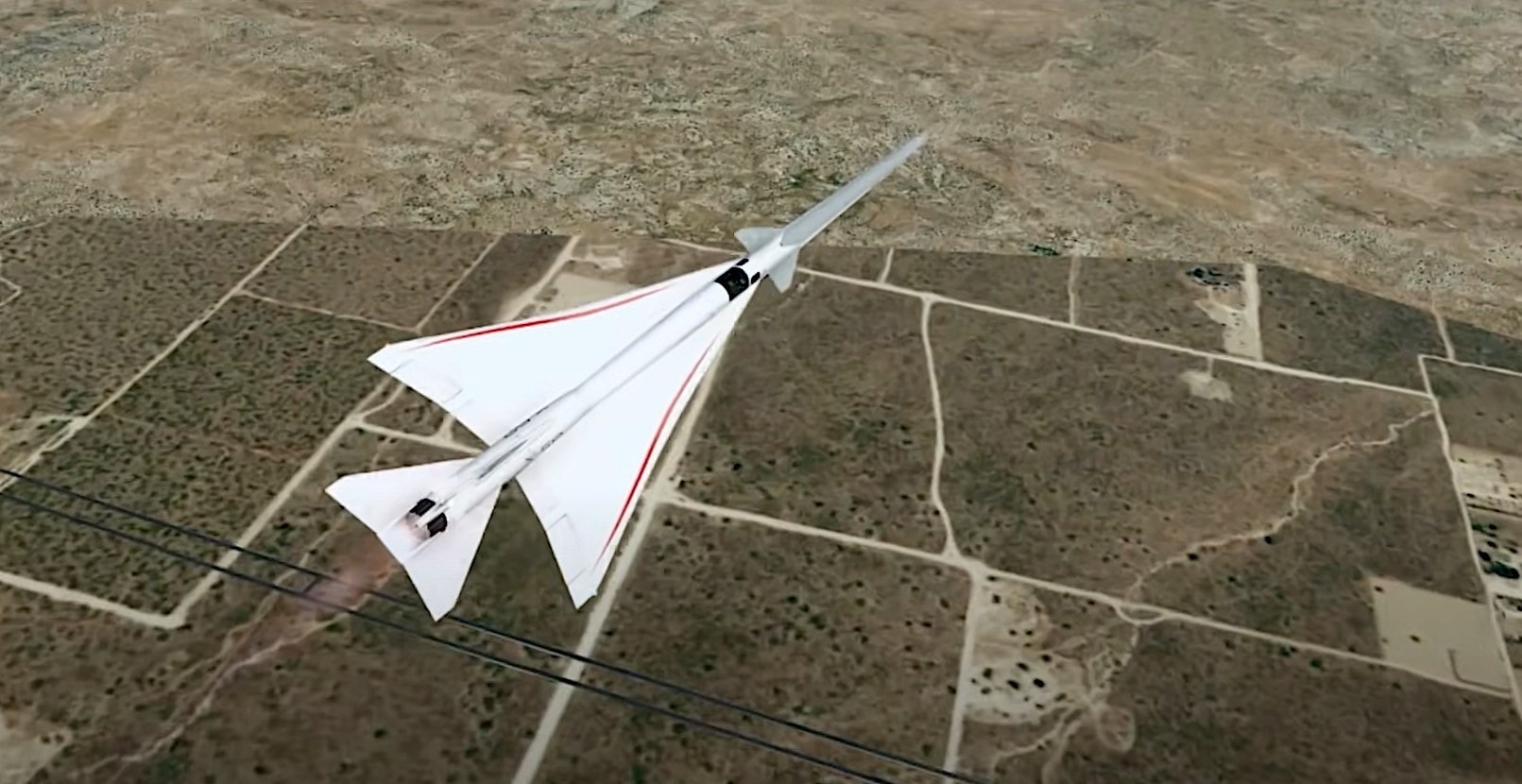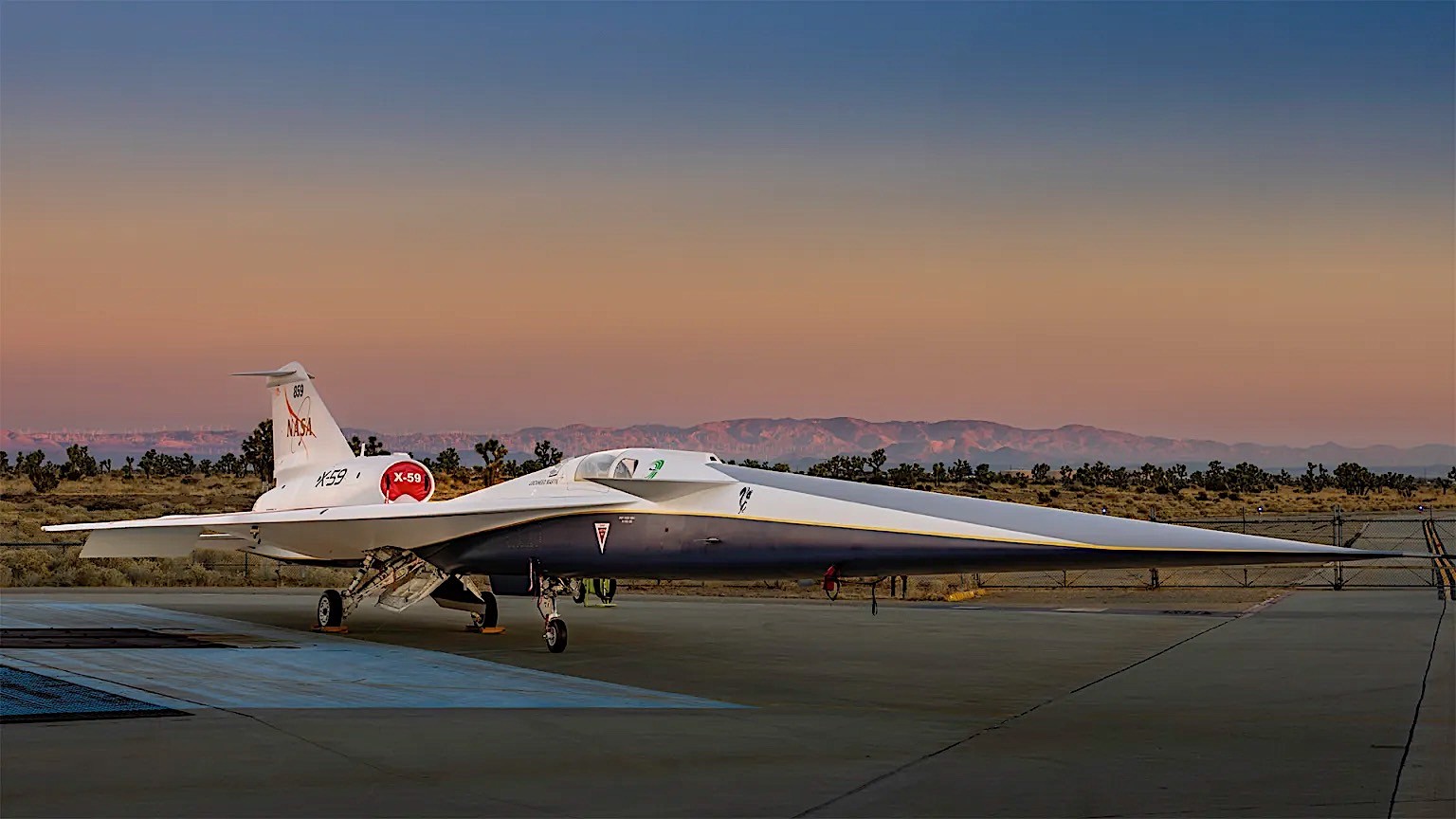The goal of NASA’s Quiet Supersonic Technology (QueSST) program, which has been underway for almost ten years, is to greatly reduce the noise generated by breaking the sound barrier in order to facilitate supersonic passenger flight over land.
QueSST seeks to develop an aircraft that turns the loud boom of supersonic travel into a mere thump. With Lockheed Martin’s help, NASA has created a real-life aircraft called the X-59. Normally, supersonic aircraft create pressure waves that merge into a loud boom.
An F-16 at over 26,200 feet (8,000 meters) produces 78 dB, while the Concorde was even louder at 100 dB. In contrast, the X-59 aims to reduce this to just 60 dB, akin to closing a car door. This is achieved through innovative design features, including the elimination of the front window (replaced by cameras and screens), a long nose with small wings, and delta wings.

The X-59, revealed to the public earlier this year, is powered by a GE Aviation jet engine providing 22,000 pounds of thrust, enough to reach speeds of Mach 1.4 (925 mph/1,488 kph) and altitudes up to 55,000 feet (15,240 meters).
In parallel, the X-59 team is preparing for ground tests to evaluate systems integration, engine runs, and electromagnetic interference. If successful, the X-59 will conduct test flights over populated U.S. areas, likely in 2025, to assess public reaction and gather data for the FAA.
NASA plans to fly the X-59 for up to nine months, with the aim of validating new design ideas and technologies for future aircraft rather than creating a direct predecessor for civilian supersonic travel.

